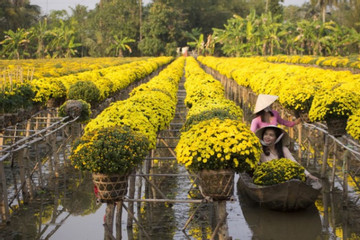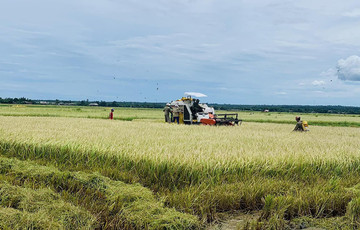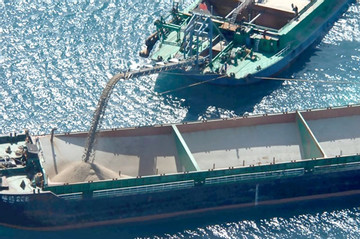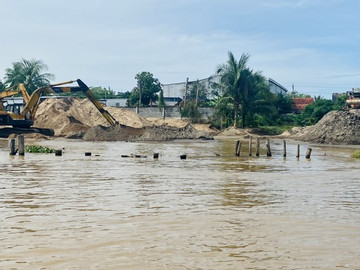- © Copyright of Vietnamnet Global.
- Tel: 024 3772 7988 Fax: (024) 37722734
- Email: [email protected]
mekong delta
Update news mekong delta
Three local destinations among six coolest towns along Mekong river
Cai Be, Sa Dec, and Tan Chau of Vietnam have been listed among the six of the coolest towns found along the Mekong river, as compiled by Australian travel newspaper The Sydney Morning Herald.
Construction of $1.9b trans-Mekong Delta expressway kicks off
Prime Minister Pham Minh Chính attended a ceremony in An Giang Province where he ordered simultaneously beginning the construction of four components projects of the first phase of the 188km Chau Doc-Can Tho-Soc Trang expressway.
Mekong Delta hospitals’ blood reserves critically low
According to the Director of the Can Tho Hematology and Blood Transfusion Hospital, the cause of the blood shortage is difficulties in procurement, purchasing supplies, screening reagents, and blood testing.
Land erosion worsens in Mekong Delta
At the end of May 2023, the beginning of the rainy season increased land erosion along rivers and canals in the Mekong Delta including the Tien River, Hau River and Ca Mau peninsula.
Searching for rock crabs along the southwestern seaboard
The term "rock crabs" is not only the name but also a characteristic of a crab species living in this sea
Mekong Delta has 10 more typical tourist destinations
Ten more places in the Mekong Delta have been recognised as typical tourist destinations of the region in 2023.
Mekong Delta well positioned to receive FDI inflows
The Mekong Delta region, located on the maritime route in the centre of the ASEAN region, has great potential to draw strong investment waves from other countries, especially neighbouring nations.
Measures for education advancement in Mekong Delta
The Mekong Delta region is seeking to improve education quality and infrastructure for students, especially at a high level, to create skilled labour forces.
Investment of $304.3 million proposed to upgrade Mekong Delta roads
The Ministry of Transport propose projects to upgrade and improve three national highways, 53, 62 and 91B, in Mekong Delta provinces.
Mekong Delta province’s rice output tops 10 million rice tons
Farmers in Vietnam's southern tip, Ca Mau Province, harvested more than 1.5 million hectares of winter-spring rice crop; thus, the province’s rice output topped over 10 million rice tons.
Vietnam sees farming revolution, exports high-quality rice
Anticipating that rice yield and output are nearly hitting the ceiling, Vietnam is preparing for a revolution in rice farming, striving for 1 million hectares of high-quality rice.
Mekong Delta needs $4b to improve infrastructure to mitigate climate change
The Mekong Delta needs more than VNĐ94.3 trillion (nearly US$4 billion) to improve its road infrastructure in order to boost its inter-provincial connectivity while mitigating the impacts of climate change.
Mekong Delta to carry out 16 climate change response projects
Sixteen projects worth over 94 trillion VND (4 billion USD) are planned to be implemented in the Mekong Delta to help the region respond to climate change.
Landslides in Mekong Delta increasingly serious
Landslides in many localities in the Mekong Delta have been increasingly serious in recent years, occuring all year round.
VN central bank calls for prioritising loans for rice industry
The State Bank of Vietnam (SBV) has instructed credit institutions in the Mekong Delta region to promote lending to rice producers and traders to help them have sufficient capital, especially in the winter-spring harvest in 2023.
Mekong Delta develops trademarks for specialties
Building and developing trademarks and obtaining certificates of origin are considered effective ways to create added value for products, thus expanding markets for specialties of the Mekong Delta.
The vanishing catch: How women are suffering in the Mekong Delta
As climate change, upstream hydropower dams and intensive agriculture threaten traditional farming and fisheries in the Mekong Delta, women like Nga are struggling to find stable alternative livelihoods.
Huge transport projects to be built in Mekong Delta
By 2026, the Mekong Delta is expected to have about 554km of highways, which will help promote the region's socio-economic development.
Builders eye sea sand for construction as river sand runs out
The General Department of Geological and Minerals of Vietnam is urgently carrying out work related to assessing sea sand exploitation for levelling highways, transport and urban infrastructure projects in the Mekong Delta.
Mekong Delta seeking feasible measures for sustainable sand exploitation
The sand demand in the Mekong Delta is quite high, especially with the North-South Expressway project going on. Yet, the sand volume here is remarkably decreasing, leading to an urgent need for feasible proposals on sand exploitation.



















